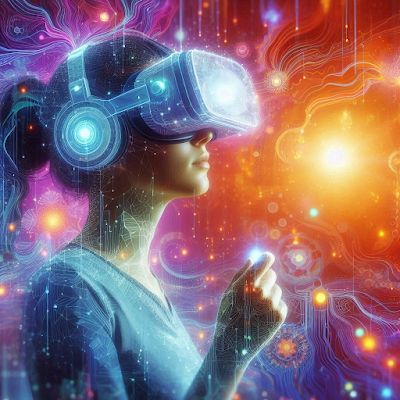Generative AI: A Catalyst or Challenge for Creative Industries?

The rise of Generative AI (GAI) has sparked a fierce debate within the creative realm. This revolutionary technology, capable of conjuring realistic and imaginative text, code, and visuals, promises to reshape the landscape for artists, writers, and designers. But is GAI a benevolent muse or a harbinger of creative redundancy? Let’s delve into the intricate tapestry of both the potential benefits and looming challenges GAI presents for the creative industries.
A Boon for Efficiency and Exploration:
One of the most compelling advantages of GAI is its ability to supercharge creative workflows. Imagine a writer facing writer’s block, who can utilize GAI to generate brainstorming prompts or even flesh out initial drafts. Artists can leverage GAI to experiment with new styles and color palettes, breaking free from creative ruts. Designers can utilize GAI to rapidly prototype concepts and iterate on ideas, streamlining the design process. Essentially, GAI acts as a tireless and versatile creative collaborator, augmenting human ingenuity with its vast computational power.
Furthermore, GAI unlocks doors to uncharted creative territories. By analyzing vast datasets of existing works, GAI can generate entirely original concepts and styles. Artists can explore unanticipated visual fusions, writers can tap into unforeseen narrative structures, and designers can experiment with previously unthinkable functionalities. GAI becomes a catalyst for unfettered creative exploration, pushing the boundaries of what’s considered possible.
The Looming Shadow of Job Displacement:
However, the rise of GAI also casts a long shadow of concern. The potential for automation looms large, particularly for tasks involving repetitive creative processes. Jobs that rely heavily on stock photography selection, basic graphic design tasks, or formulaic content creation might become increasingly susceptible to automation. This raises a critical question: Will GAI replace human creatives altogether?
While automation is a possibility, it’s unlikely to be a complete takeover. The human touch remains irreplaceable. GAI excels at generating raw material, but it lacks the emotional intelligence, empathy, and lived experience that imbue truly impactful creative works. Human creativity thrives on critical thinking, cultural context, and emotional resonance, aspects that GAI currently struggles to replicate.
The Future: A Collaborative Dance
The most likely outcome is a synergy between humans and GAI. Instead of viewing GAI as a competitor, creatives can leverage it as a powerful too to enhance their skillsets. The future of the creative landscape will likely be one where humans curate, refine, and imbue meaning into the raw materials generated by GAI.
Challenges and Opportunities:
The integration of GAI into the creative industries presents new challenges that require careful consideration. One major concern is the potential for copyright infringement. As GAI learns from existing creative works, it’s crucial to ensure its outputs don’t simply replicate copyrighted material. Additionally, the ethical implications of GAI-generated content need to be addressed. Who owns the rights to AI-created works? How can we ensure GAI content is used responsibly and ethically?
However, these challenges also present opportunities for innovation. The development of clear legal frameworks for AI-generated content will be essential. Additionally, fostering transparency around GAI’s creative processes will be crucial in building trust with audiences.
Conclusion: A Future Filled with Creative Potential
Generative AI is a transformative force that will undoubtedly reshape the creative landscape. While concerns about job displacement are valid, the potential for collaboration and innovation is profound. By embracing GAI as a tool and not a threat, creatives can unlock a future brimming with unprecedented creative possibilities. The key lies in harnessing the power of AI while preserving the irreplaceable human touch. This collaborative approach will ensure the creative industries continue to thrive and illuminate the world with their brilliance.






Responses